|
Location: Puerto Viejo de Talamanca, Costa Rica
Project: Wildlife Rescue, Rehabilitation and Conservation Duration: 4 week (min) Cost: $350 + Accommodation and Food Programs: Volunteer, Internship & Local What’s included: 1 week accommodation and breakfast only at La Ceiba. Project details: Assist with animal husbandry tasks – cleaning, enrichment, food preparation and distribution, maintaining enclosures and grounds. If you have the time to volunteer for a month, I highly recommend the Jaguar Rescue Centre in Costa Rica. After heading to Costa Rica twice in one year, I was determined to head back and volunteer once again. This time it would be longer and on the Caribbean side. After reading many reviews and applying directly with them I was to head back and care for sloths, monkeys, ocelots, raccoons, birds and many others. Despite the name ‘Jaguar’ Rescue Centre, there were no jaguars, but many amazing native Central American animals I have never encountered, and would fall in love with. I had no idea that rehabilitating a Toucan would become one of my favorite activities or how sneaky a Greater Grison can be. And I’ll never underestimate the menacing behaviors of a baby squirrel or raccoon again. The highlight for many would be taking care of the sloths, but for me it was taking the monkeys to the forest or building enrichment for them. I loved everything about the project and even extended my stay for 2 weeks. This program is great for those who want to work hands on with animals, and the one week you work at La Ceiba, (a more remote rescue centre located nearby that is mandatory) is great for those seeking a more natural no touch experience that I think is amazing. MY OPINION: Facility: The Jaguar Rescue Centre facility is a good size. There are many different sections that house a variety of species and the outer non caged grass and forest areas for certain animals to enjoy during the day. The centre has a good sized vet clinic and rehabilitation area, a kitchen prep area, laundry and enrichment storage. La Ceiba has massive land and rivers for the pre release animals to enjoy and it takes some time to see it all. Tourist Trap: Yes and no. There are daily tours and sometimes busloads. Despite this, the visitors are not to go near the animals and it is very well organised. As I find the cost for this volunteer project to be very reasonable, I believe the tours are important to help fund the sanctuary. Hands on: You will be working hands on with many of the animals, but they are not petting or selfie times. You will have to move sloths, carry monkeys, and have a variety of other animals on you. Again, these are not photo or cuddle opportunities. Despite some of the animal’s cuteness they can be very dangerous, dirty and annoying at times. Volunteer duties: The days are somewhat long with 2 break times. The work load is best suited for someone who doesn’t mind getting dirty and with good physical strength. Feeding, animal handling, cleaning and reorganising enclosures, enrichment, laundry, dishes and site maintenance. Enrichment: A major job each day is enrichment. Usually it is heading out of the sanctuary to collect trees, plants and flowers for the enclosures or to give as food or make toys. Another enrichment task could be just spending time with the animals observing them or keeping them company. Overall: Although it was more hands on then I felt it needed to be, I still really enjoyed my time and a lot of good does come from the centre in the ways of re-releasing. The sanctuary does so much for the rescued animals and is great to the volunteers. This was a very well organised program and although there were tours, they did not get in the way of the work load. MORE DETAILS Daily Duties: You start at 7am for a meeting and then given a designated area in which you will work. After a break you be assigned another task until lunch. After lunch another job will be assigned to you. There are a variety of jobs – some easy, some not, but not all are working with the animals. Animal care will go to those that have skills or that have been shown how to work with the animals. Work days usually end before 4pm. Accommodation: There are 3 options; you can stay at the volunteer house next door for $20 a night – but you must prebook this to see if there is space. You can book through a 3rd party organization that will set you up with room, food and airport pickups. Or you can find your own house or hotel to rent. If you need a hotel before or after the project I recommend Adventure Inn or Country Inn and Suites by Radisson. Transportation: You will need to make your way there and back – I used Caribe Shuttle and found it to be a great service. The location is fairly central to many restaurants and grocery stores, but renting a bicycle is mandatory if you are not staying at the volunteer house. You might want to rent a bike to go to the large grocery store, evening outings or exploring, but there is a taxi driver that the volunteer house uses. Food: If you are staying at the volunteer house you will be sharing a kitchen and need to prepare all your meals. Grocery stores and restaurants are nearby. Days off: You are given 2 days off on a weekly schedule and this can vary. There is plenty to do nearby and on tours. I even hopped over to Panama for a quick getaway. Wifi can be dodgy depending on how many people are using it. What to pack: Rain jacket, pants, long sleeves, tank top and shorts, runners or boots. Mosquito spray, flashlight and whatever else you would pack for a trip. For more information on the project click here https://www.jaguarrescue.foundation/en-us/SupportUs/Volunteering/4-WeekVolunteerProgram
0 Comments
Location: Dominical, Costa Rica
Project: Wildlife Rescue, Rehabilitation and Conservation Duration: 1 week (min) Cost: $600 + Programs: Volunteer, Internship & Local Whats included: Room and board -2 meals a day for 5 days. Project details: Assist with animal husbandry tasks – cleaning, enrichment, food preparation and distribution, building and maintaining enclosures. For years I’ve heard how amazing Costa Rica is. Eco tourism, waterfalls, surfing, yoga, volcanoes etc and then you throw in the wildlife! I knew it was a destination I would love to work in. The hardest decision was where and what volunteer project to do. Costa Rica is home to hundreds of volunteer projects – whether planting trees or protecting the rain forest, working with turtles or monkeys, butterflies or birds, children or adults; there are bountiful volunteer opportunities in Costa Rica. So how did I decide on Alturas? I missed working with monkeys and ocelots, I only had a short holiday over Christmas and it was budget friendly. They had a very detailed program https://d16b0l4lltd1ns.cloudfront.net/images/AWS-Volunteer-Handbook-2018.pdf and Alturas did not appear as a tourist trap and had decent reviews. This sanctuary met all my criteria. I skipped the middlemen and applied directly through their website. https://alturaswildlifesanctuary.org/volunteer MY OPINION: Facility: Alturas’ facility is quite small in comparison to other sanctuaries. You can easily walk the sanctuary in 10 minutes. They have the main area which is home to various monkey and exotic bird species, sloths, racoons, ant eaters, ocelots and an assortment of adorable Central American species. There is another section that is away from the tour area for a more quite pre prep area to monitor health and determine whether they will be re-released. And then there is the isolation pre release area. A vet clinic, animal food prep kitchen and an education centre with the staff kitchen and dining area. Tourist Trap: No. Although they do daily tours, the main source of income is volunteers and sponsorship. Hands on: You will be in an enclosure with some of the animals while cleaning and preparing enrichment, but the contact will be very limited. There will be times you will have to move a sloth, or shake animals off of you while cleaning, but they are definitely not cuddly selfie moments. Volunteer duties: The days are somewhat long with plenty of break times. The work load is best suited for someone who doesn’t mind getting dirty and with an average physical strength. Food preparation, feeding, cleaning and reorganizing enclosures, enrichment, and site maintenance. Enrichment: A huge portion of the day is spent toward enrichment. This can be from collecting palms, creating natural toys, changing the enclosure, or building new platforms. Overall: This was a very well organised program with a true focus on rehabilitation. Although on the smaller side, it was not crowded with volunteers or tourists in which it gave volunteering a more personal feel. I highly recommend and feel they need the support. MORE DETAILS Daily Duties: You start at 7am and are given a designated animal area in which you will clean and deliver the food. Around 10 am you break and after that it is enrichment time until lunch at noon. Your break is for 2 hours and then more cleaning, enrichment, feeding, or a variety of work until you finish at 4pm. Accommodation: There are 4 options, with varying prices. The volunteer house – 4 bedrooms/2 bathrooms and a kitchen. One private apartment with a double bunkbed, a bathroom and a kitchen. The hotel on the property or you can stay nearby and get yourself to work (You will need your own vehicle). Transportation: The location is fairly remote and sometimes difficult to get to due to the very steep long drive up the hill. If you do not have a vehicle, you will need to take a taxi/hired car from an airport or hotel. Be aware it is a very steep and some cars are unable to get to the top. You can call the sanctuary or hotel and they can pick you up from the bottom. The volunteer coordinator will on occasion be taking you out for dinner and group organised activities on your days off. Food: The sanctuary will provide groceries for your own breakfast and then provide a cooked lunch and dinner 5 days a week. On the days off you can prepare your own meals or be taken out as a group. The hotel also has a delicious restaurant. Days off: As it is remote, unless you have a vehicle it is difficult to get around. There will be outings or you can just relax and enjoy nature. Wifi works well here. What to pack: Rain jacket, pants, tank top and shorts, closed toe shoes or runners. Mosquito spray, flashlight and whatever else you would pack for a trip. For more information on the project click here Link: https://alturaswildlifesanctuary.org/volunteer Bukit Merah Orang Utan Island Foundation Project Location: Semanggol, Perak, Malaysia Project: Orangutan Education and Conservation Assistant Duration: 1 week (min) Cost: $550 US What's included: One way transfer to the project. Room and board -2 meals a day for 5 days. Project details: Food preparation, feeding, enrichment and enclosure cleaning for the orangutans. I never thought I could have a favorite animal, but after managing the sanctuary in Ecuador and volunteering in Costa Rica, my love and fascination was for the primates. And with the admiration of Dian Fossey and Jane Goodall, working with a great ape is an absolute dream. I set my sights on Borneo and Sumatra – home of the Orangutans. I researched numerous projects and realised the cost at the time was a bit out of my budget. I was still determined and eventually found a small budget friendly orangutan sanctuary near Penang, Malaysia. My first thought was a zoo rather than a sanctuary. There were limited reviews other than tourists and only the foundations website to go on. I imagined the worst. And this is why I felt I had to go. For a better understanding of why that is please read my blog LINK My initial understanding was that the orangutan facility was created as more of a tourist attraction for the lakeside resort in the early 2000’s. It wasn’t until 2008 they became an ex-situ facility. It is now a behavior research centre that hosts students, veterinarians, primatologists and others while taking in and caring for orangutans that need rehabilitation before they can go back in the wild. True or not, this is something that is said about every sanctuary. My TRUTHFUL OPINION: Facility: Both good and bad. The daytime area was located in the jungle- spacious, natural and a great place for an orangutan to live. Unfortunately, the night time enclosures left something to be desired. It was in a tiny and dark cage with no enrichment or comfort. As with most sanctuaries they are housed this way to avoid any poaching, injuries or other dangers when there is no staff to observe them. To make night enclosures bigger and better can be costly and considering they are diurnal, the focus is on the daytime behaviour. The other areas of the facility are quite good for research, vet and average food prep areas. Tourist Trap: No. The lack of promotion and the few tours that went through during my time, showed the limited resources and the belief it was more of a research centre. Hands on: Here the orangutans are very adapted to human contact which always makes it difficult to be re-released, but possible. When feeding the orangutans there is a lot of close contact and touching through the cage which is discouraged but it does happen, and dangerous incidents where the orangutans will grab you and not let go. They may provide a very brief photo opportunity with one of them on your last day, but no touching. Volunteer duties: Very easy and short days. Not much involved in physical labour and a great starting point for someone new to volunteering or the more chilled type. Just make sure you get all the tasks done before having your orangutan time. Remember they rely on you to feed them and clean their night home properly. Enrichment: Very limited as they have plenty of enrichment outdoors, but they still love it - so get creative. There are a few orangutans that are permanently in cages unfortunately due to lack of funding and space, that desperately needed enrichment, which I made my top priority. Overall: I think this is a great project that has a lot of potential. If you go in with an open mind and don’t question a lot of the practices or reasoning, you will enjoy this beyond memorable, laid back and inexpensive volunteer project that really needs your funding. MORE DETAILS Daily Duties: You start at 8:30am and prepare the juice and feed the orangutans while in the night cages. They are then released and you begin the cleaning. It can get a bit hot and mosquitos are an issue for some. Until 11 you can do enrichment. Just after 11 you prepare another juice and rice on M/W/F. Lunch is then served, then you feed the second juice. Orangutan time until around 2, then chop up vegetables, prepare rice balls on M/W/F, tidy up and head down to the dock – You are done! For a detailed list click here LINK Accommodation: Shared 3 bdrm/2bath apartment with the host and other volunteers. Wifi can be dodgy at times – it is highly recommended you pick up a sim card. The host will take you into town on your first night to get supplies. Transportation: You will be picked up from the airport or your hotel in Georgetown. After the project you will have to plan your transportation back. There are limited taxis but you may ask the host to find a ride to a bus or train station. Each work day you will be picked up and dropped off to the boat that takes you to the sanctuary. On your days off you will need to rent a bike or walk. There is very little around the accommodation. Food: Breakfast consists of granola bars, fruit, cereal coffee and bread. Lunch is usually a homemade curry with rice or spaghetti. For dinner you’ll be driven into town and taken to a restaurant. This you will have to pay for yourself, but the food in Malaysia is fairly cheap. I spent usually less than $5.00 and was content. If you’re a big eater and want a few drinks, budget for $10/night Days off: You will have the weekend off, but it’s quite difficult to go anywhere and there is not much nearby. If you’re an animal lover like me – I just asked if I could work instead. There is a swimming pool that may be open and waterslides a short walk away. For food a bike is recommended or the walk to the resort, unless you’ve stocked up and just want to chill. What to pack: Shirts and shorts that cover your knees and shoulders. Flip flops are ok…if you don’t mind the bugs. Mosquito spray. And whatever else you would pack for a trip. For more information on the project click here https://www.involve.org.my/index.php?a=program&e=program_detail&pid=T10053 update: program closed2018 - UPDATE - PROGRAM CLOSED
CRSI Ecuador Volunteer Program 2014 Location: San Isidro, Ecuador Project: Animal Sanctuary Duration: 6 months (Minimum 2 weeks) Cost: $125/week Project Details: Cleaning, Feeding, Enrichment and General Care of all animals at the sanctuary. For those that have read my blog on Ecuador I have been given the green light to go ahead with my volunteer project. Starting February 2014 I will be in need of volunteers to help me with these amazing animals. The sanctuary is not open to the public, therefore there is limited funding. The project was created to not only assist with the daily duties of running a sanctuary, and provide the animals with much needed love and attention, but to eventually expand and help the local community as well. Volunteer support is very important, with your hands-on help we can make a huge difference to the well-being of all the animals. During your visit take the opportunity to learn Spanish, visit the Galapagos, and help local communities. Daily Volunteer Work- 5 day week: - Enrichment with the animals - Cleaning the animals enclosures - Preparing the food (vitamins, portions etc.) - Feeding the animals - Building or fixing enclosures and shelter - Grounds maintenance and upkeep - Assist with husbandry, new or injured or sick animals Assisting with marketing and fundraising may also be required. Fees go directly towards airport transfers, accommodations and meals. As there is no funding, a small portion goes towards staff and essential supplies for the sanctuary. Cost: $125 a week with a minimum of 2 weeks. Like us https://www.facebook.com/pages/crsi-Ecuador/237311506316384 If you are unable to volunteer, you can still help out by donating here http://www.volunteertruth.org/donate/ No images - due to the fact pictures were not permitted, or were to be owned by insync at the time.
Location: Wylie, Texas, United States Project: Wildlife Rescue and Education Duration: 3 month Internship or long term local commitment Cost: Free Programs: Internship & Local Volunteer What’s included: Accommodation for interns only. Project details: Assist with animal husbandry tasks – cleaning, enrichment, food prep, maintaining enclosures and grounds, night watch, and research papers. After spending some time working with Tigers in Thailand, I knew I wanted to learn a more western way of caring for exotic cats. Since Canada is not home to many exotic animal sanctuaries (thankfully) I set my sites on the US which (unfortunately) has more tigers in captivity than in the wild. Texas and Miami have the most sanctuaries, so I did my research and applied at a few. Big Cat Rescue in Miami had a huge draw for me, but I should have seen a few red flags when they asked me for a $50 application fee. At the time I was so keen and paid it, only to find out that I would have to fly out and go in for an interview, this did not even guarantee I would get the internship. So, I decided on In Sync Exotics in Texas instead. Unfortunately my 3 month internship ended up being a month and a half, due to an opportunity in Ecuador and my unhappiness of the program. Now it’s not to say In Sync is a bad sanctuary, they actually treated the animals really well. I just wish they treated the volunteers and staff better during my time. I won’t get into the numerous complaints or drama that occurred; I will just base my opinion in regards to the internship program. Unfortunately, the promises of enrichment, animal training and animal behavior observations were not there due to the overwhelming workload the interns had. I’m not sure if this was due to the fact there was just 2 interns at the time, but the hours where very long (7am to sometimes 11pm) the work was physically demanding (hauling out frozen horse thighs and neatly stacking them in freezers), tedious (pulling out every single lion or tiger hair from the enclosure fence) and sometimes unnecessary (food had to be cut or carved in a certain way or the animal would not eat it). There was a 31 page manual and the list of rules and don’ts surpassed any project (or even job) I’ve had and might be acceptable for some people, but for me it was not an enjoyable experience. MY OPINION: Facility: In Sync Exotics is a large facility full of average size cages and decent outdoor enclosures with swimming pools that are used on a rotating basis. There is a clinic, kitchen, storage, and laundry for the animals. Tourist Trap: Yes and no. It is open to the public, but it is not gimmicky and is more educational focused. The visitors do not go near the animals and I believe the tours are important to help fund the sanctuary. Hands on: Not at all. After a few weeks you may learn how to feed an animal safely and supervised through the fence. I actually enjoyed the fact it was not hands on, but unfortunately they discouraged you (or the lack of down time) to be able to sit back and enjoy them. Volunteer duties: The days are extremely long and you break very quickly for a snack or pee break. The work load is best suited for someone with physical strength, stamina and patience. All aspects of indoor and outdoor enclosure cleaning, food preparation, record keeping, research paper, laundry and whatever else that may come up. Enrichment: They do provide tons of great enrichment, but during my time there they had only local volunteers doing all the enrichment, training and companionship time. I was only allowed to observe if time permitted. Overall: Unfortunately, my experience was not the greatest (During my time there was staff drama, change over and a few animal medical emergencies) so I cannot say if this is a bad program, but it was definitely not one I would do again. I’m hoping they have loosened up and have more than 2 interns, because it is a good facility and the animals are treated very, very well. MORE DETAILS Daily Duties: The day begins between 6 and 7 and can go all the way up to 11pm if you are on night shift. You will be cleaning enclosures meticulously-changing hay in dens, water tubs, scrubbing and pulling out every hair strand stuck in wire, scooping and recording poop out of pools, indoor and outdoor enclosures, food prep and stock supplies (which has about 10 different tasks), laundry, kitchen cleaning, garbage dumps, night feeding (best part of the program) and heaps of other jobs. Accommodation: There is accommodation on site, which was quite cool as the windows looked into the cougar enclosure. The house had 3 bedrooms, kitchen, bathroom, living room and laundry. Transportation: I was picked up from the airport, but wish I had rented a car on occasion as the stores were quite far to purchase my food supplies. Food: You will be cooking all your own meals, stores and restaurants are quite far. Days off: I had one day off a week and without a car, it was nice to just relax at the sanctuary. What to pack: Depends on the season – it can get quite hot or cold. Good water proof boots are highly recommended for all seasons. For more information on the internship project https://www.insyncexotics.org/education/ For more information on local volunteering only https://www.insyncexotics.org/volunteer/ 4/7/2013
IVHQ - International Volunteer HQ Cape Town, South Africa, December 2010 Project applied for: Surf Outreach Duration: 2 weeks Cost: $620 ($220 Registration Fee / $400 Program fee including Food & Accommodation) Project Details: Getting kids off the street, mentoring & feeding them while having fun teaching them to surf. Staying in a home-stay 30mins from Cape Town, All meals provided. Project Change: Orphanage Project Details: I changed projects once I found out the Surf Outreach Program was changed to staying in a hostel 2hrs from Cape Town. Orphanage project would be at a church and my home stay was with the pastor and his family. Project completed: Kids Drop-In Centre Duration: 3 weeks Cost: $1040 (Fees as above / $100 accommodation fee paid directly to host family for an additional week / $140 on food / $20 travel / $160 Project supplies, food & gifts Project Details: Playing games with kids whose parents were at work during the Christmas holidays. 3hrs a day, 4-5 days a week, for 2 weeks. First week, no children, just planning and buying supplies. That left only one week to actually be a part of the project. (A secret deal was made that I pay the host family $100 for the week to stay and finish the program). Bread and Fish sticks were the only meals provided. Public transportation to and from project/town is extra. Overall Costs: $3296.70 ($1040 as above / $1,446.70 flight / $45 insurance / $315 vaccinations / $200 hostels / $150 food / $100 Misc Groups Involved: IVHQ / SASTS / Host Family & Project. IVHQ: A company with great marketing. This is the initial contact and they were exceptional. Very prompt at replies, great with details and very fair pricing, their mistake was dealing with SASTS. They had acknowledged this and I believe have dealt with it. SASTS: Our South Africa contact. Programs, accommodation, orientation and all questions/concerns while in South Africa. I am unsure if they were new as a volunteer company or just a company trying to make a quick buck, but this is one organization I would steer clear from. From a company taking a CUT of $600 for 2 weeks - 3 years ago, to a company CHARGING $1200 for 2 weeks, something is not right. They definitely do not research the host families or projects very well. (A few girls had signed up for 6 weeks on the same 2 week project as above, SASTS was of no help and told them to deal with IVHQ) Other IVHQ volunteers that were there for the orientation, I had kept in touch with and found out that their projects with SASTS were nightmares and not what they had expected. (They did say that IVHQ had been very apologetic and helpful.) Host Family: As this was also their project, their intentions were good, but their priorities were not. They were not straight forward with project details to SASTS and the money they received from SASTS and the volunteers was not spent wisely. Overall Project: I absolutely adored working with the kids. There were roughly 100 kids, aged 4-16 who were not orphans but did live in some not so great conditions (many of the kids had ipods!) I taught life skills, created a talent show and played many games. We went on a field to Boulders Beach (in which some of the kids had never seen the ocean) and hung out with penguins. The hours were way too short - we left whenever the lead was too tired to work, usually about 3hrs. Sadly the kids were left to take care of themselves until the parents got home. I purchased tons of items to hand out at Christmas, including toothbrushes, school supplies and toys and was overwhelmed by tears of how thankful they were. Overall IVHQ: I would recommend IVHQ, but check with whom they are dealing with in your projects country. Keep in mind all the additional costs that may occur. Although IVHQ is one of the cheaper organizations, you may be dealing with similar experiences. So it goes to question - is paying more for a volunteer project worth it? update - program closed2018 - UPDATE - PROGRAM CLOSED
Tiger Temple 2012 Location: Kanchanburi, Thailand Project: Animal Sanctuary Duration: Ongoing (Minimum 1 month) Cost: Free Project Details: Cleaning, Feeding, Enrichment and General Care of the Tigers and all animals at the sanctuary. Working with the Tourists. The Tiger Temple, Wat Pha Luang Ta Bua, is located in Kanchanaburi, Thailand about 3 hours from Bangkok. It is one of the only Volunteer programs that does not require a fee. The program provides you with shelter, food and the experience of a lifetime. You are required to be there for a minimum of 1 month. As this is on Buddhist land, the accommodation is a bare room. Women are in separate quarters from the men (There are 4 rooms in each quarter, so a max of 16 volunteers). Mattress and mosquito net are essential. Your shower consists of a cold water hose, which you actually look forward to by the end of the day. There is also a common room for the volunteers to hang out together in. Food is provided once daily as monks believe in fasting after 12pm, a Thai buffet that has been offered by the community and served in the Sala (an open air temple) with the monks and tigers. (As Westerners, we are permitted to eat privately throughout the day with our own food or food saved from breakfast.) Your schedule is from 7am until 4:30, 6 days a week. The morning is spent with the tiger cubs: training them to walk, to play, feeding and providing them with heaps of love. Cleaning cages and the areas around them is another part of our morning ritual as well as an hour of enrichment, (building toys, enclosures, stimulating their senses or other jobs for the many other animals at the temple). The afternoon is spent dealing with the tourists. You could be sorting lines, giving speeches, selling tickets, watching the guests near the tigers, providing information or looking after the cubs. The people can be abundant and the heat excruciating, but at the end of the day you eagerly look forward to your mornings with the tigers - definitely worth it all. |
Details
Archives
April 2020
Categories |
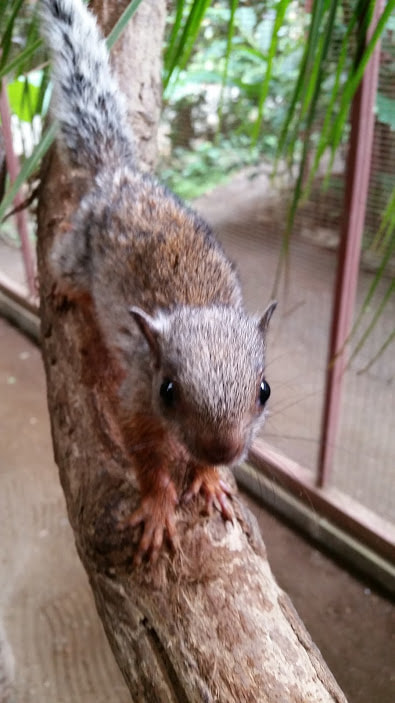

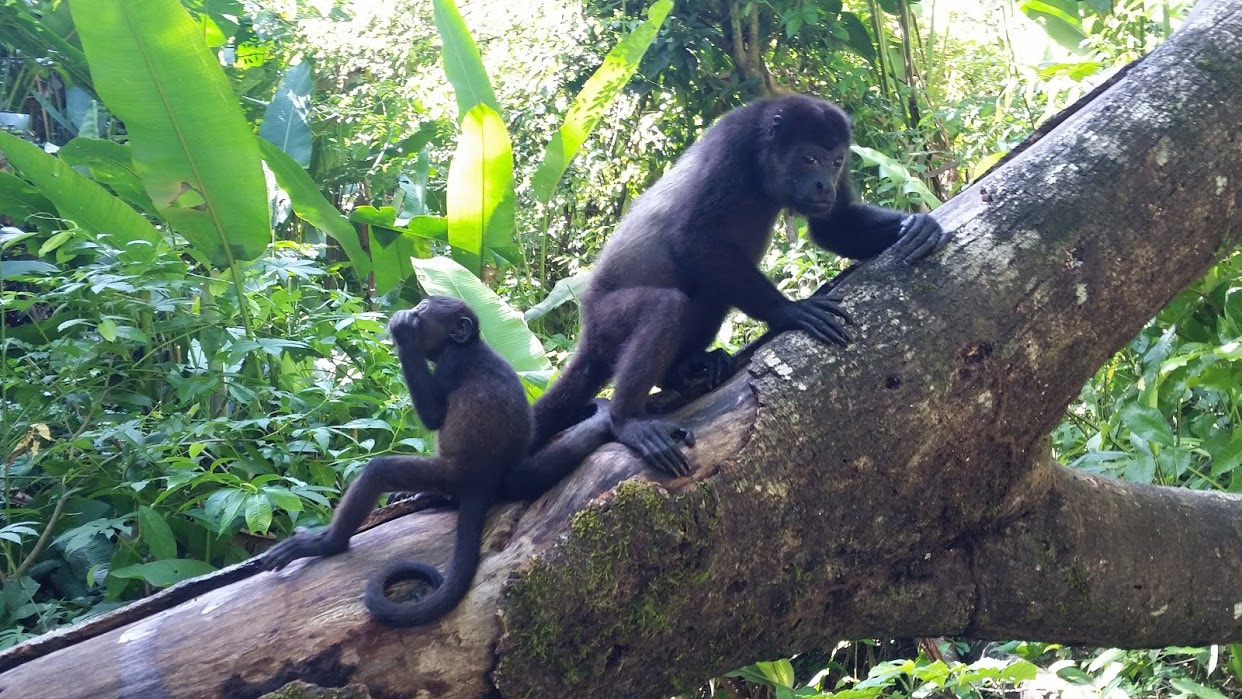




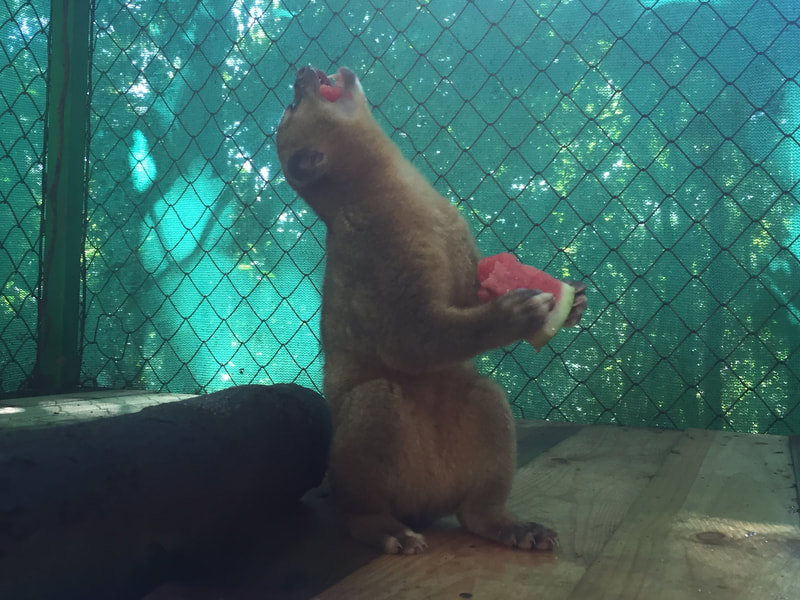
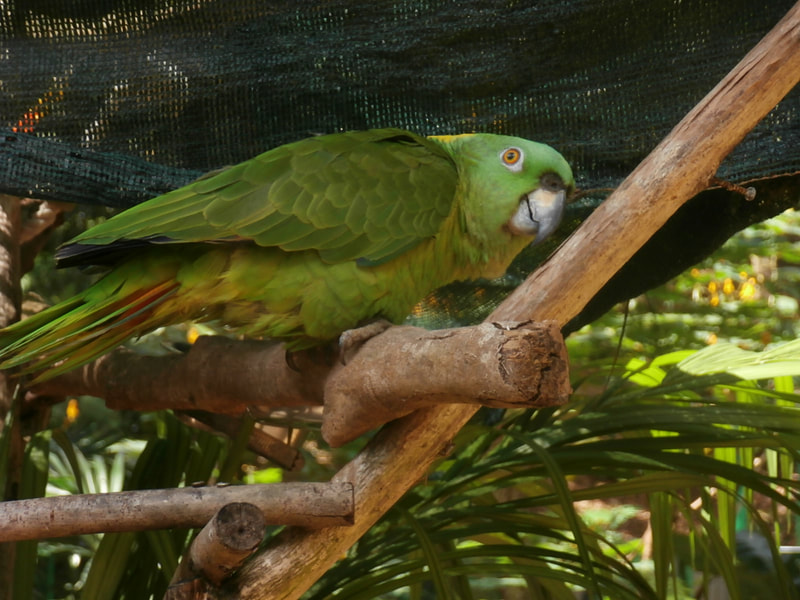

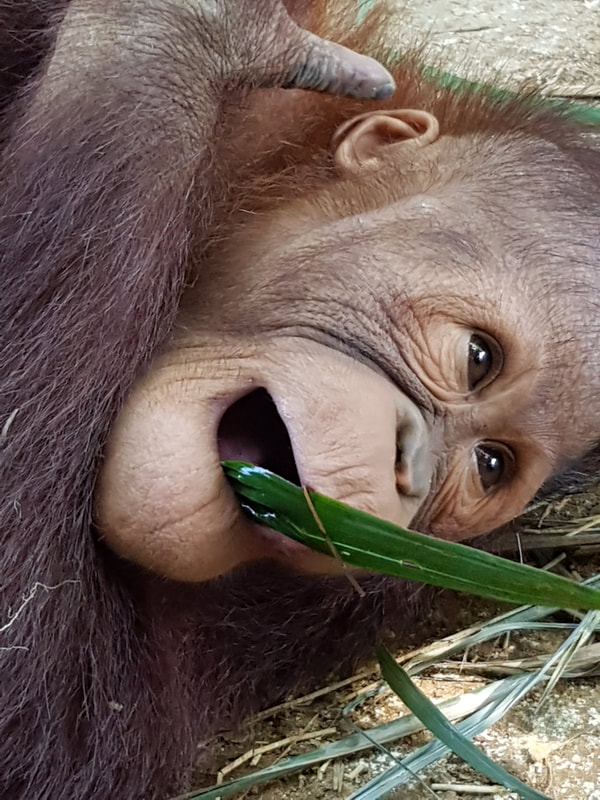
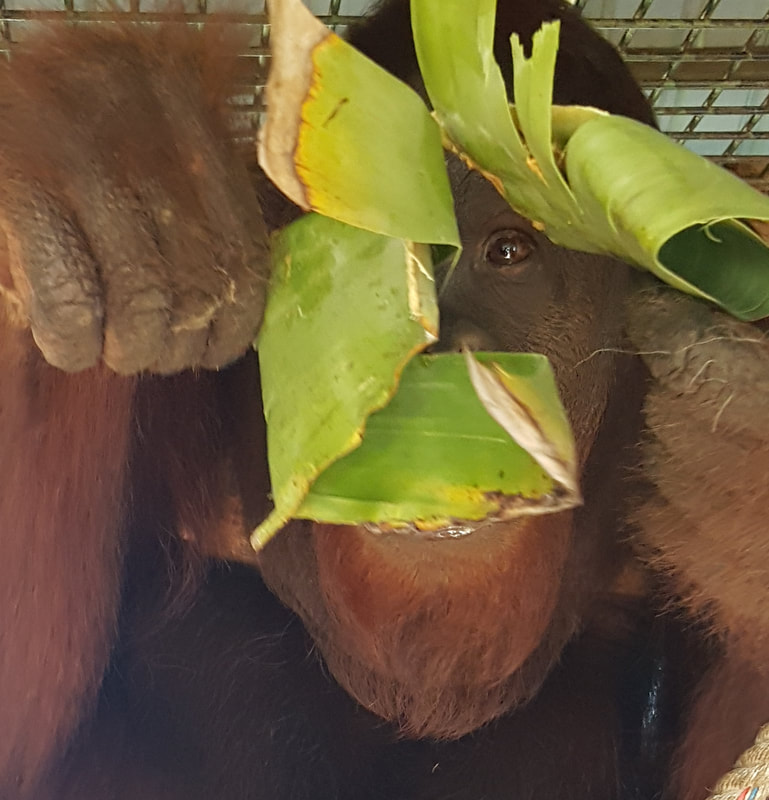
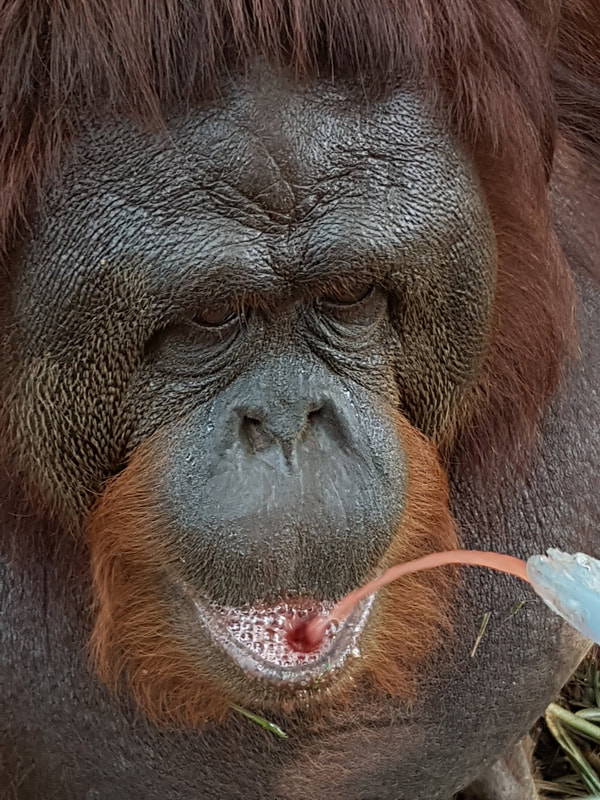

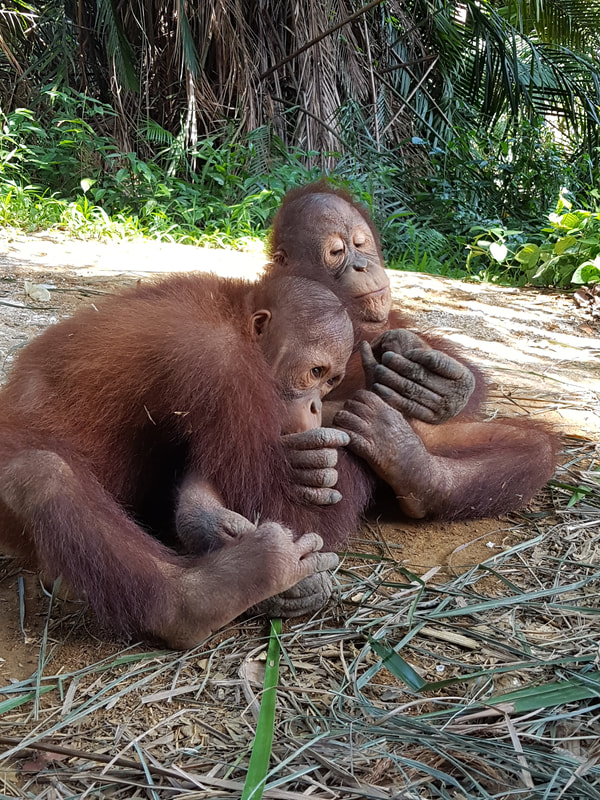



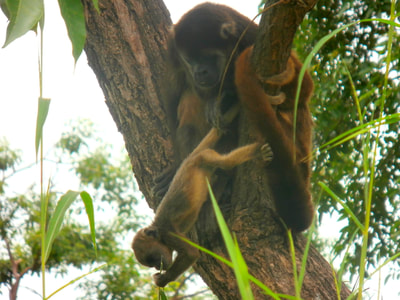

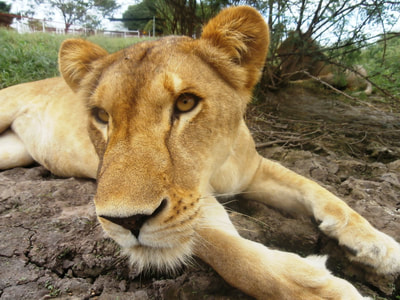
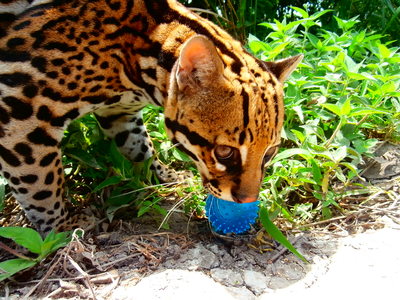

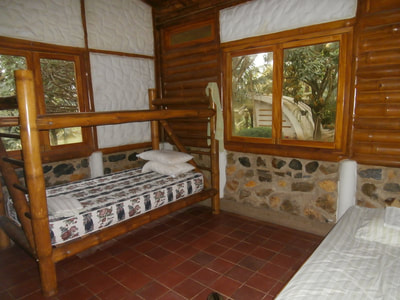




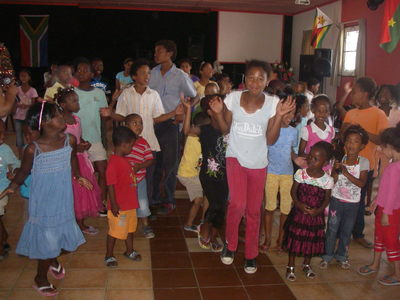


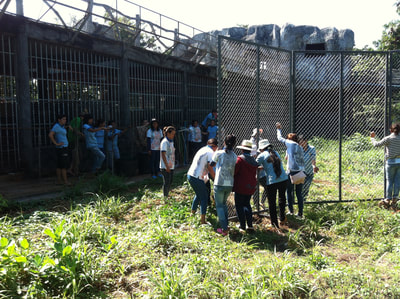

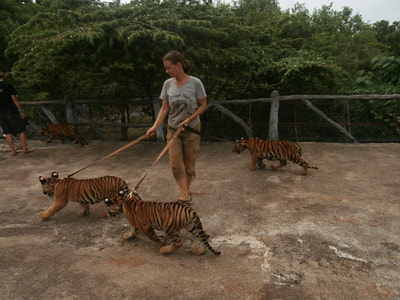
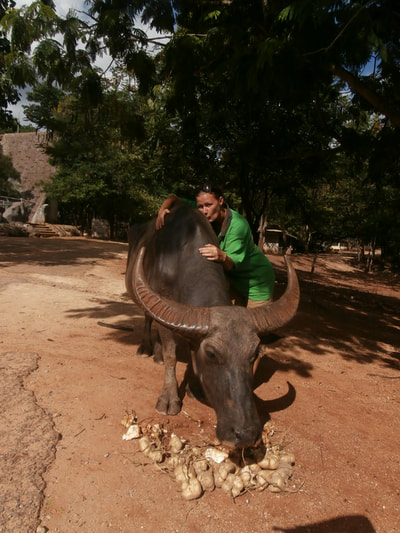
 RSS Feed
RSS Feed
